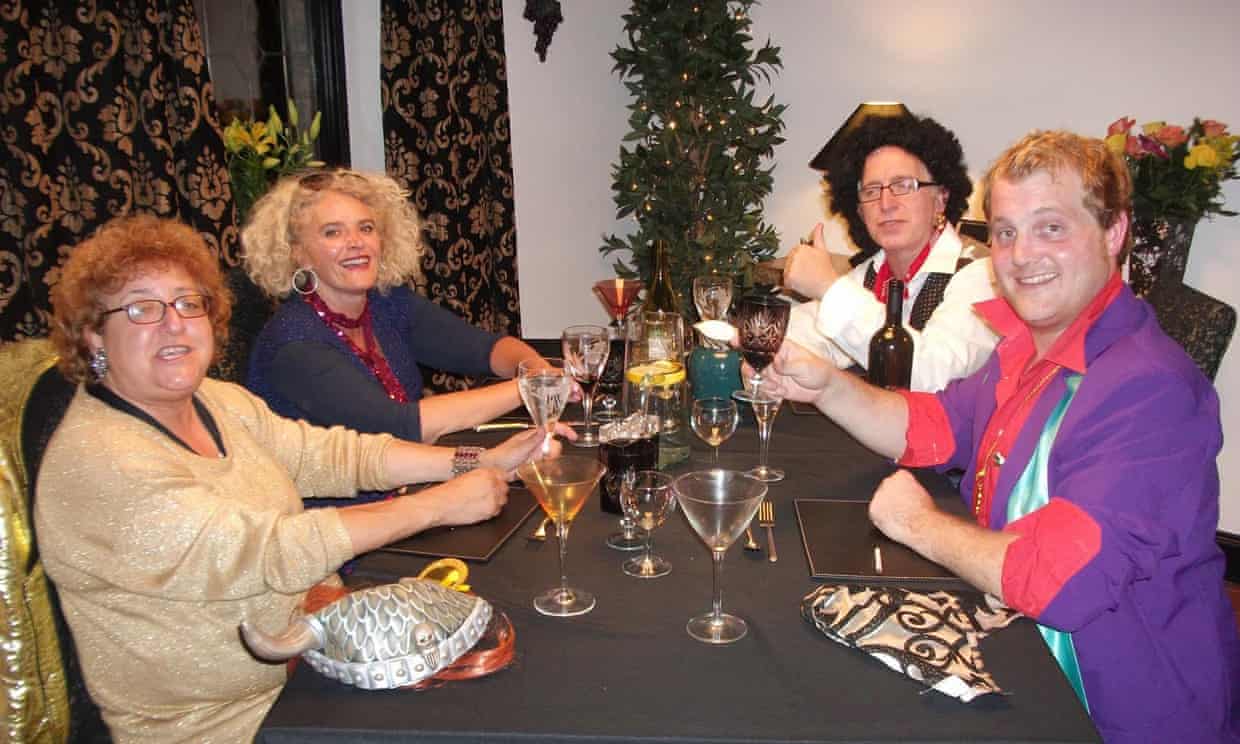
Come Dine With Me
Fifteen years of TV dinners: why Come Dine With Me has endured
The combination of cookery and snooping has revealed Brits at their best and worst: generous and gracious – or sneering and judgmental
by Kieran YatesIf we have learned anything from 15 years of Come Dine With Me, it’s this: never buy shop-bought pastry if you want to impress four strangers with your culinary skills.
This year celebrates the 15th anniversary of the show in which five people in one city invite a group of strangers to have a dinner party for five nights. Afterwards, they rate their hosts (usually in the back of a taxi) and scores are tallied to crown a winner of £1,000 at the end of the week. It swiftly became a cult hit.
There is a distinctly British fascination with looking inside people’s homes – just look at our current obsession over people’s bookshelves. Before the pandemic struck, we had the likes of Changing Rooms, 60 Minute Makeover, Through the Keyhole, How Clean is Your House, Wife Swap and Location, Location, Location, that allowed us to poke around strangers’ houses. The domestic nosiness that titillated us exposed our ravenous appetite to judge others.
These shows also illustrated the nation’s large wealth disparity and our notions of class and taste. But in CDWM, the homes were not the main attraction, but rather an aside to psychics, lecturers and place-mat-obsessed hosts that somehow made them even more intriguing. It was about people more than it was about their possessions.
There is something distinctly British about CDWM. There was a running joke that you could have predicted how Britain was going to vote in the EU referendum by watching old episodes of the show. It exposed the hearts and minds of the UK, from union-jack theme nights to the screwed-up faces at “European menus” (before those same sceptics guzzled down the fresh pasta and potatoes à la dauphinoise with gusto).
Dave Lamb has consistently provided sharp and sometimes devastating voiceovers (whip-fast reviews of the efforts of hosts such as Tina: “Curry from a jar, microwaved rice and shop-bought flatbread … this should be interesting”). He is the voiceover benchmark by which all others are judged, and is always badly imitated in lesser shows.
On a BBC podcast dedicated to the show back in 2018, Richard Osman said: “I don’t think there’s [been] a better depiction of the class system, ever, than on Come Dine With Me.” That might be a slight overstatement, but even watching one episode can be a riveting social safari. While we have long endured the sneering tone in discussions about council homes with “ugly” fire doors, and standard-issue gas heaters hastily turned into MDF fireplaces on home-makeover shows, CDWM explores a subtler classism. If you live in a castle, you must be clever, you must have manners; if you have a big kitchen, you must know food. If you have Matalan placemats, the meal probably isn’t organic.
It is notable that the people of colour on CDWM are often presented as hackneyed caricatures, and that there is an instant scepticism directed towards their taste most of the time. Not just the unpalatable spice whenever a chicken is “over-peppered”, but of their “exotic” furnishings, which are all met with dollops of discomfort around the table as immigrant homes are treated with fascination and derision.
It is interesting to watch the surface joviality on screen while racism is layered between courses like soggy trifles. When we finally see the ruddy-faces of puffed-out men jerkily dancing along to soca with headdresses ironically placed on their heads as “entertainment” it is all met with wink-to-camera laughs.
That is not to say that the show isn’t compulsive viewing. The now viral astonishment of Peter in 2016, who, after losing, sourly quipped: “You won Jane. Oh my God, enjoy the money. I hope it makes you very happy. Dear lord, what a sad little life, Jane,” is a meme that even has its own merch. And the point it makes – about being a bad loser – is the lie uncovered by CDWM, that of British reserve and “proper” behaviour. Over 1,000 episodes later, we watch for the eccentrics, and just sometimes for the recipes.
Fifteen years and counting of this reality-TV staple reveals more than we might like about British life. What we see is often joyful, sometimes stomach-curdlingly uncomfortable, but always revealing. We use too much butter; at our worst, Brits are petty and bad losers, obsessed with status. But at our best, we are welcoming hosts, generous with our praise of others, and happy to laugh at ourselves.
Any changes to the format have never worked so well. The simplicity of five people in five homes endures. The show reminds us how to be together, to find the joy in breaking bread, and, if your name is Jane, how to win with caution.